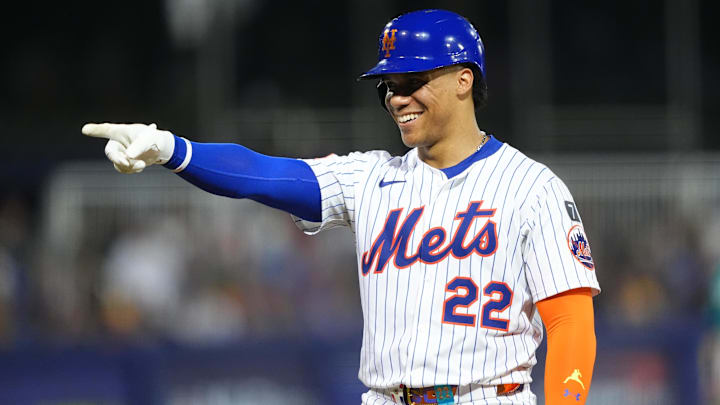Every poker movie has that moment where the hero slow-plays the winning hand. In Rounders, Mike McDermott sits on the nut straight until the river falls, then flips it for the knockout (yes, Mr. Malkovich, he beat you straight up). This late in the season, the New York Mets' winning hand requires one more shuffle of Juan Soto. He’s been productive hitting second and third all year, but the full power of that hand—if played correctly—has yet to be unleashed.
The move is straightforward: Soto belongs in the leadoff spot. He’s capable of setting the table in a way the Mets haven’t fully leveraged, and the lineup could operate differently with him at the top. It’s not about reinvention, just about putting one of the game’s best players in the position where his impact compounds. Making this adjustment could be the simplest and most effective way for New York to reshape its offense.
Juan Soto, in the leadoff role, has the potential to transform the Mets’ lineup.
Juan Soto has made a career out of making pitchers miserable, and this season is no different. He leads all of MLB with 102 walks and posts the lowest chase rate in the game at 15.1%, refusing to swing at what he shouldn’t—and punishing pitchers when he does. In 95 plate appearances leading off an inning, Soto is hitting .244 with a .379 OBP, a .905 OPS, and has drawn 17 walks, already showing he can set the tone from the first pitch.
Soto has also swiped 20 bases this season while being caught just once. He’s not suddenly the fastest man in baseball, but his improved technique and smart baserunning make him a real threat to turn singles into scoring opportunities and force pitchers into uncomfortable decisions early in the count. That combination of patience and activity at the top of the order is exactly the kind of leverage the Mets could use to pressure opposing defenses.
The one area where Soto has stumbled this season is with runners in scoring position, hitting just .202 with a .751 OPS. Lindor, on the other hand, has been more consistent in those situations, hitting .262 with a .754 OPS in slightly fewer at-bats—and he’s been heating up lately. That makes the pairing behind Soto especially appealing: Soto works counts, gets on base, and pressures the defense, while Lindor provides protection that encourages pitchers to challenge him the way they should.
Taken together, the case for Soto as the Mets’ leadoff hitter isn’t just numbers—it’s a strategic adjustment that leverages his strengths while covering the lineup’s weaker spots. He’s not doing anything revolutionary, but putting him at the top turns every plate appearance into an opportunity to control the pace, giving New York a subtle edge that could pay dividends all season.
Moving Soto to the top of the lineup is a calculated move that amplifies his strengths and sets up the order for success. With 33 games left, the Mets could finally play their best card and let the offense take off.
